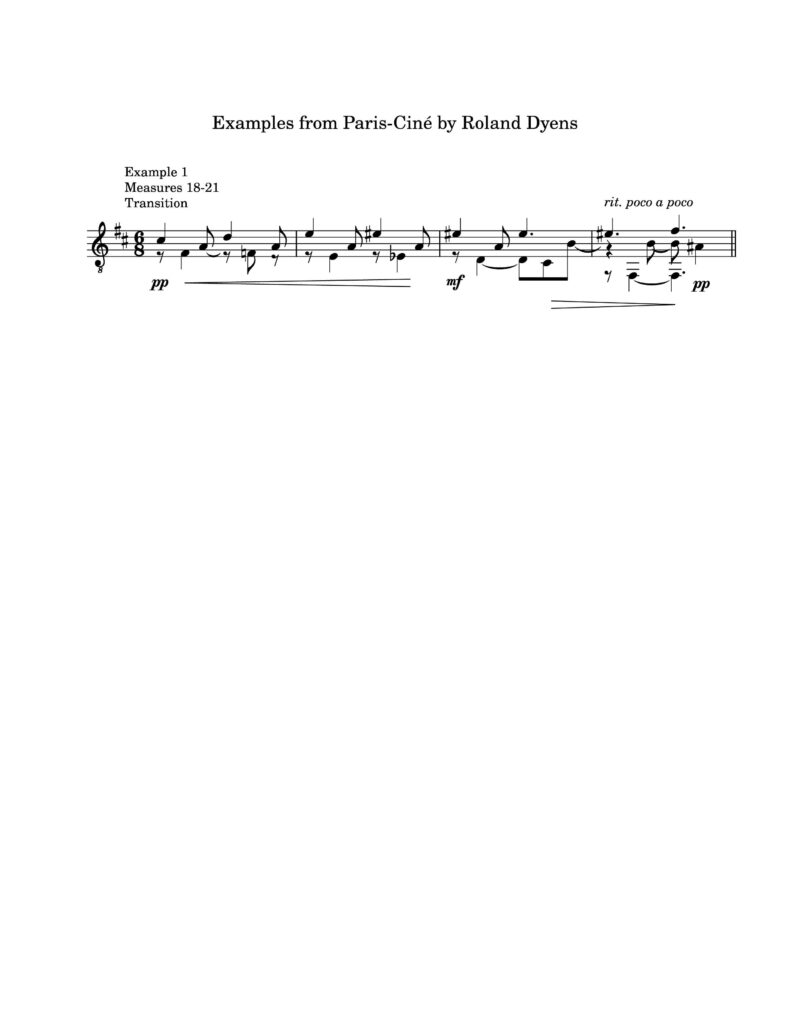Paris-Ciné is the eighth composition in Les 100 des Roland Dyens by Roland Dyens (1955-2016), and it is also available as an individual composition. Paris-Ciné is an excellent example of a composition in short ternary form that has a retransition from the end of the B section to the beginning of the repeat of the A section.
The basic student model of ternary form (ABA) consists of an eight-measure phrase (A) with a conclusive cadence, followed by a contrasting eight-measure phrase with a conclusive cadence (B), and ending with an exact repeat of the opening eight-measure phrase (A). Both Adelita and Lagrima by Tarrega are examples of compositions written in short ternary form.
After a student has learned the basic model of short ternary form, they can expand on it by making the phrases longer or shorter, by adding transitions and/or retransitions, varying the repeat of the A section, and by adding introductions and/or codas. Of course, students can develop their compositional skills by trying differing levels of contrast in B sections.
In Paris-Ciné, the different sections of the short ternary form with a retransition are as follows: A section (measures 1-8), B section (measures 9-17), retransition from B to the repeat of A (measures 18-21), and the varied repeat of the A section (measures 22-31).
The A section (measures 1-8) is a period made of two four-measure two phrases. The B section (measures 9-17) is a different period, made of a four-measure phrase followed by a five-measure phrase. The additional measure in the five-measure phrase (measure 17) is a varied repeat measure 15.
The B section is followed by a four-measure retransition (measures 18-21) that leads into the repeat of the A section (See example 1). The ultimate measure of the retransition (measure 21) is an F# major chord that functions as a dominant chord leading to the B minor chord that begins the return of the A section in measure 22. The retransition begins with an F# in the bass, which is the beginning of a chromatic line that goes down to a C#, at which point it leaps down a fifth to an F# in measure 21. Simultaneously, the retransition begins with a C# in the upper voice, which is the beginning of an ascending chromatic line (which is missing a D#) that ends on an F#. The middle voice provides an A# to form and incomplete F# major chord in measure 21.
The repeat of the A section (measures 22-31) has a number of variations from the first occurrence of the A section (measures 1-8). Additionally, there is a two-measure extension at the end of the repeat of the A section that gives the section and the composition a conclusive ending.
Here is a link to a performance of Paris-Ciné (https://www.youtube.com/watch?v=IDyMFMEQOXo).

You can download a .pdf of the example page by clicking on the button below.
